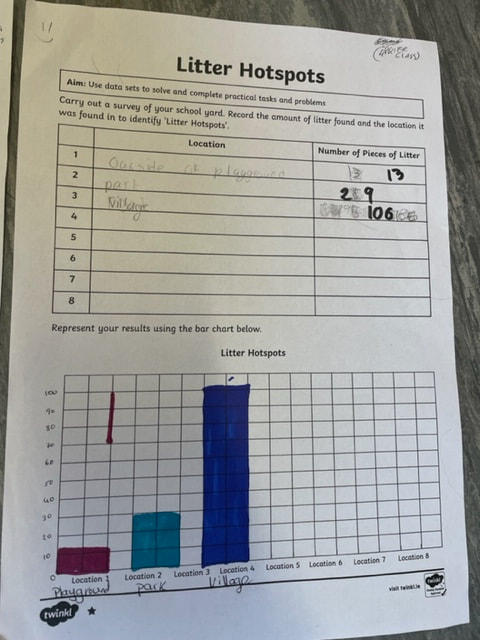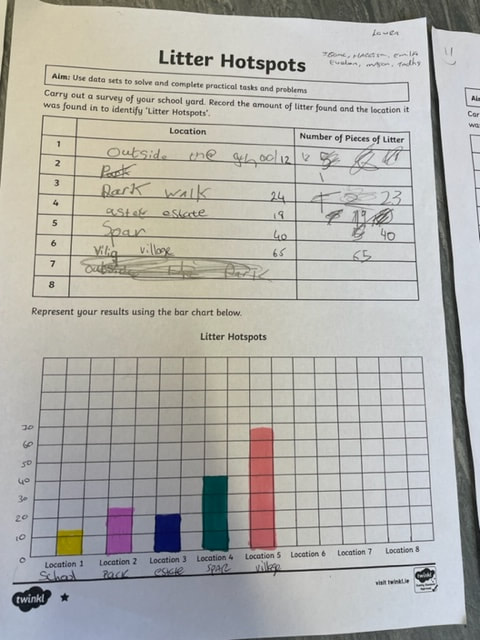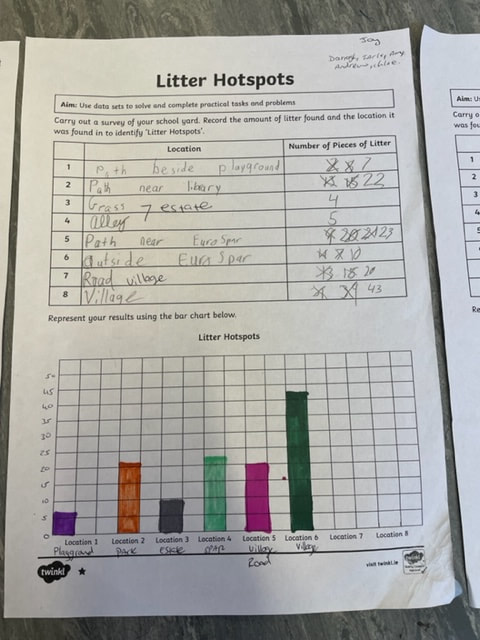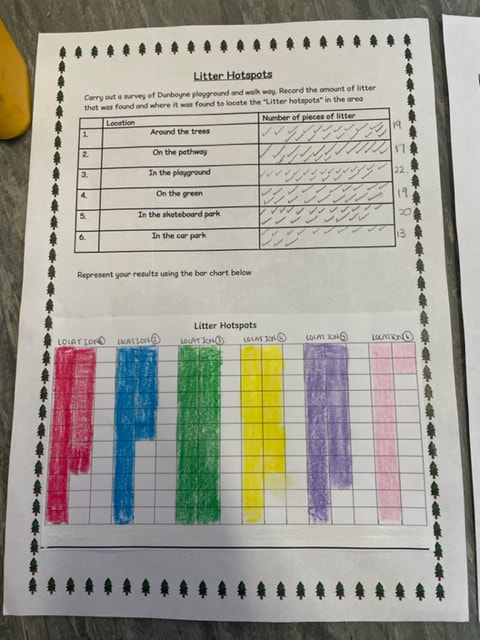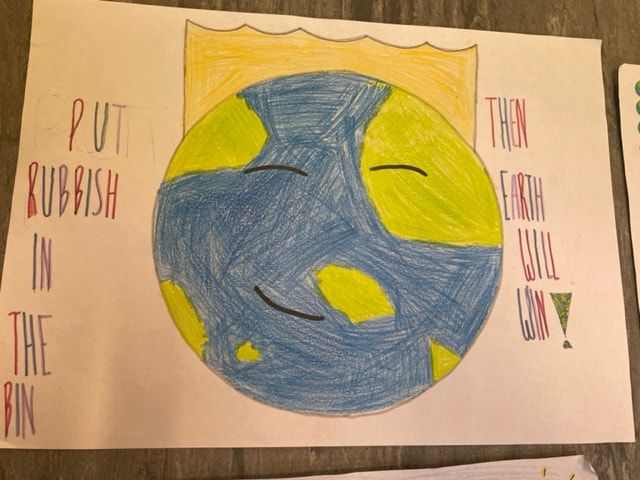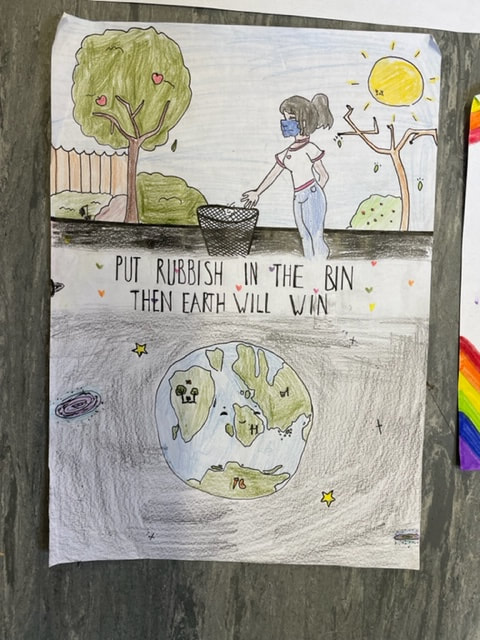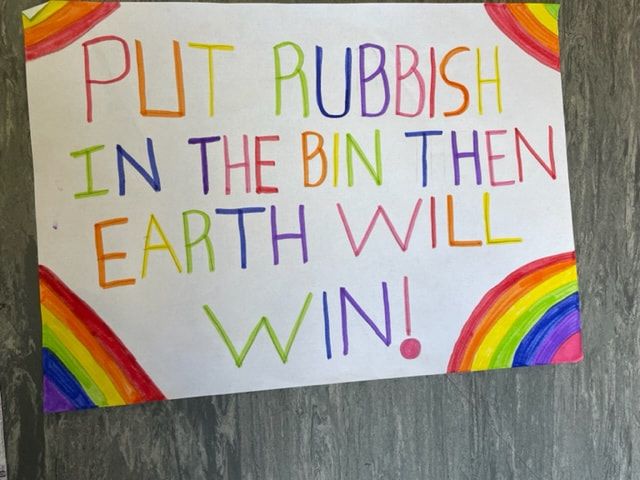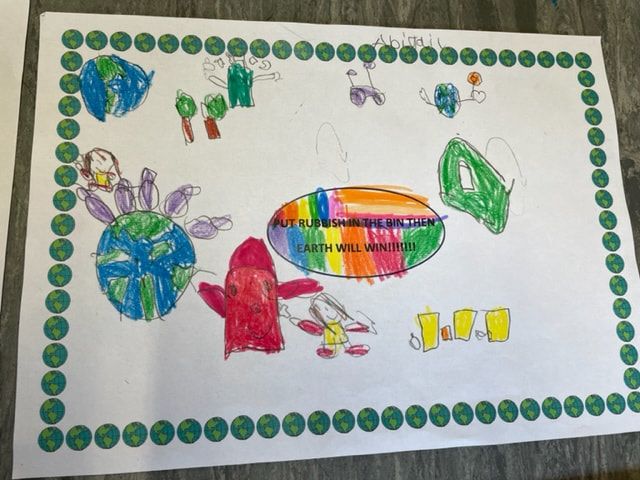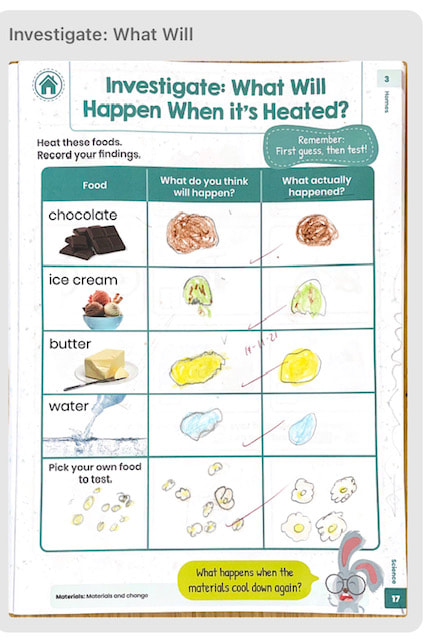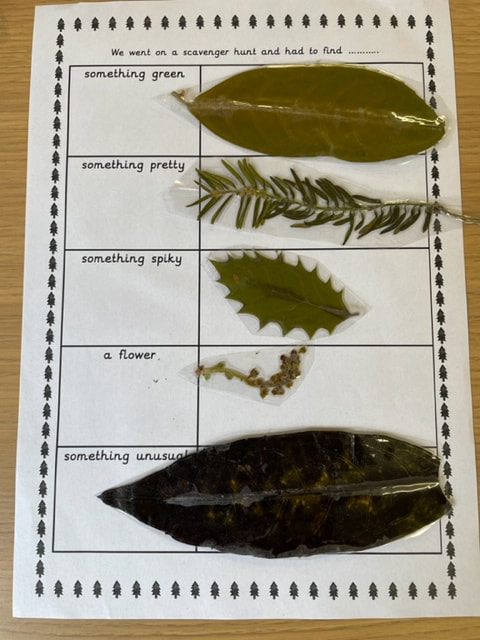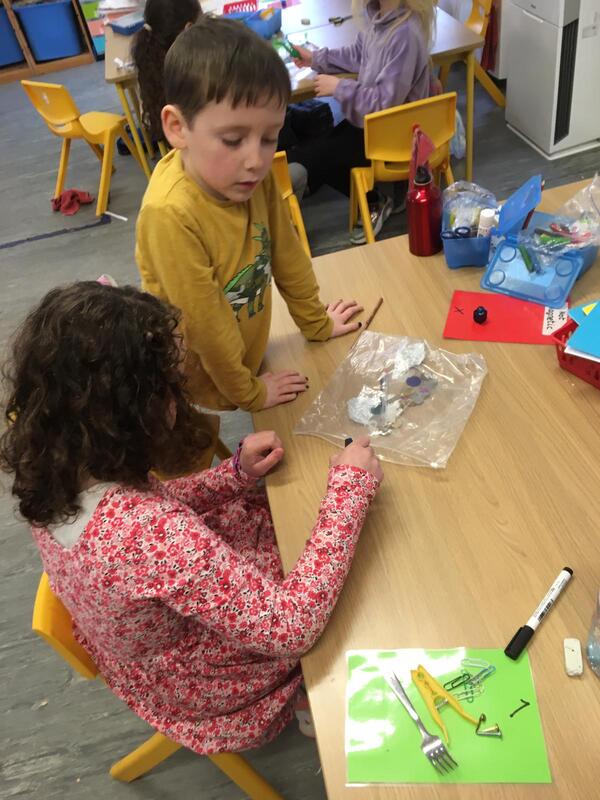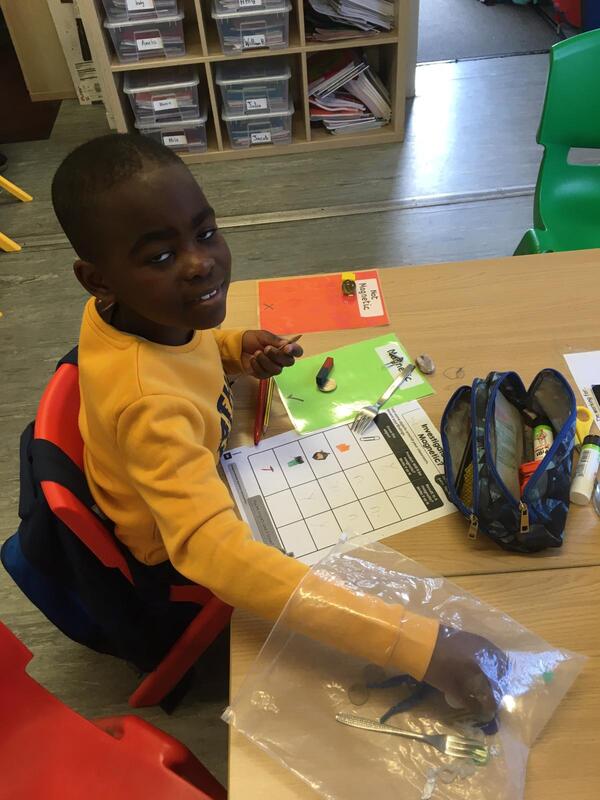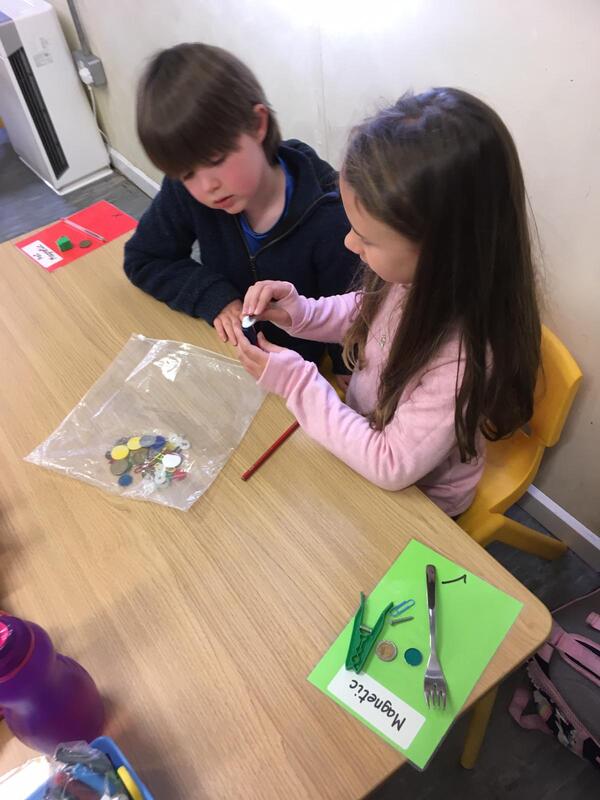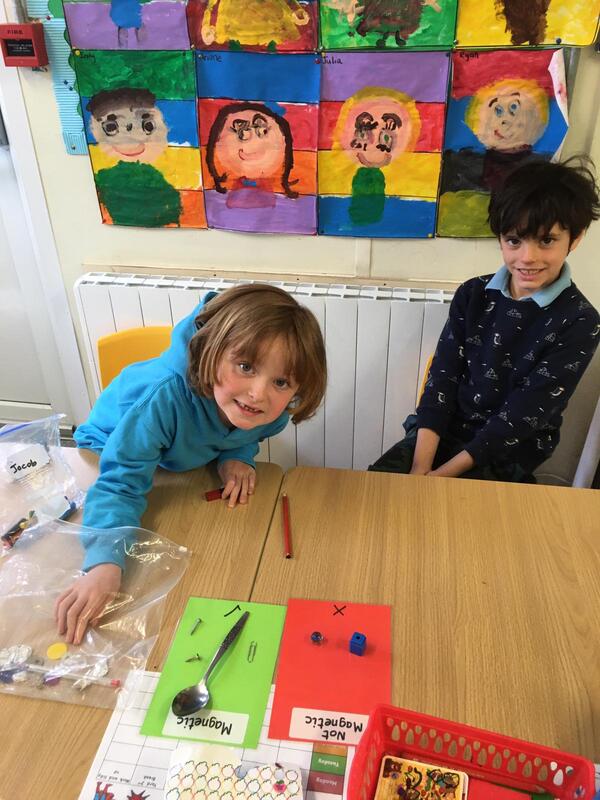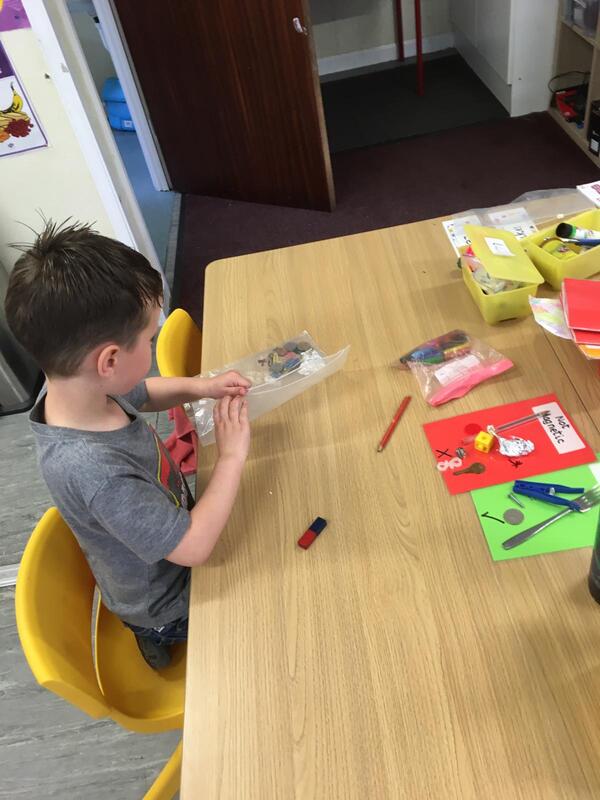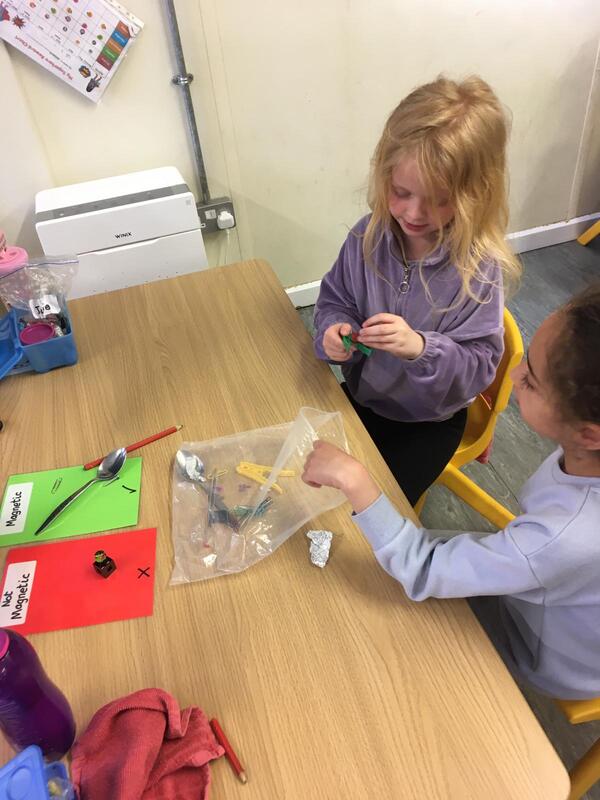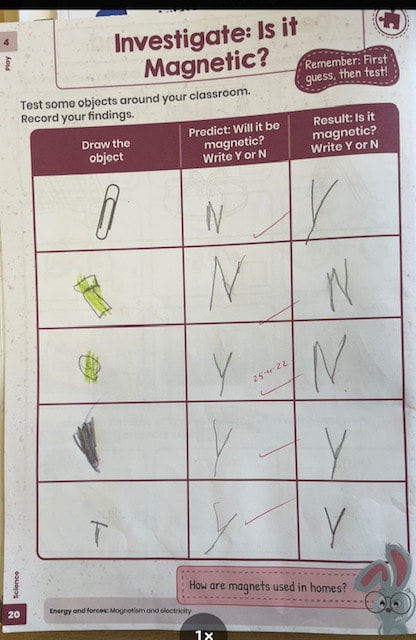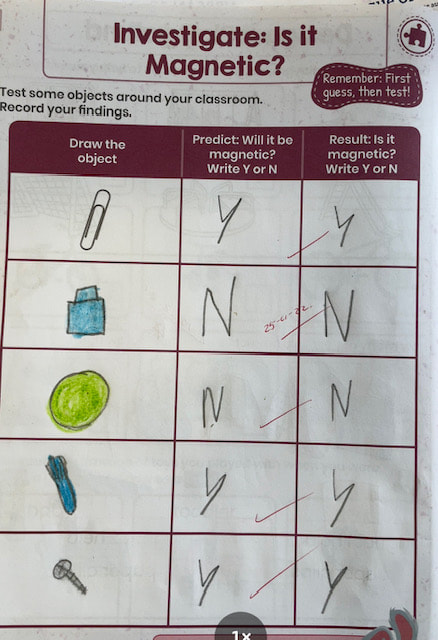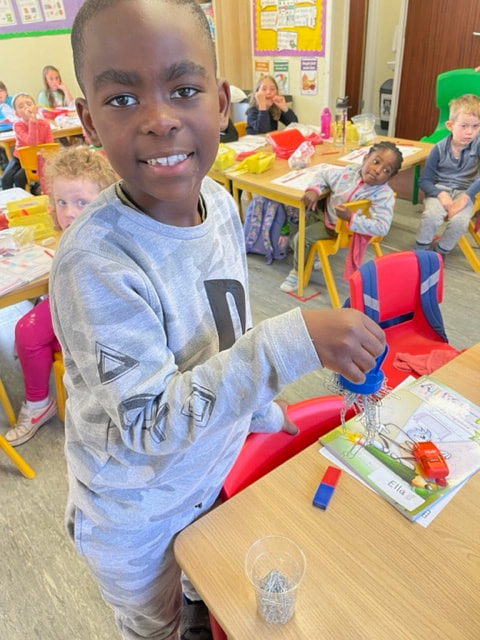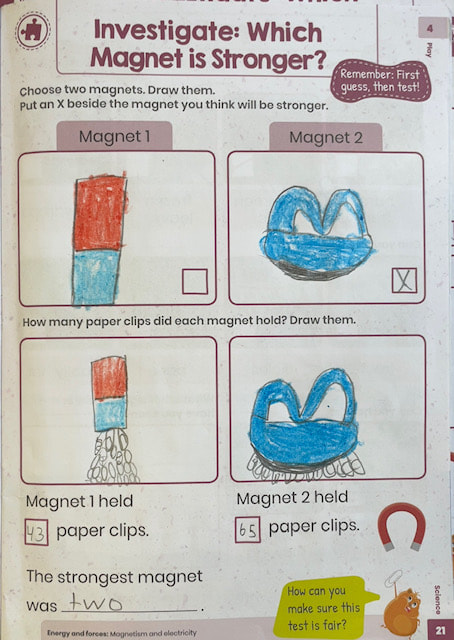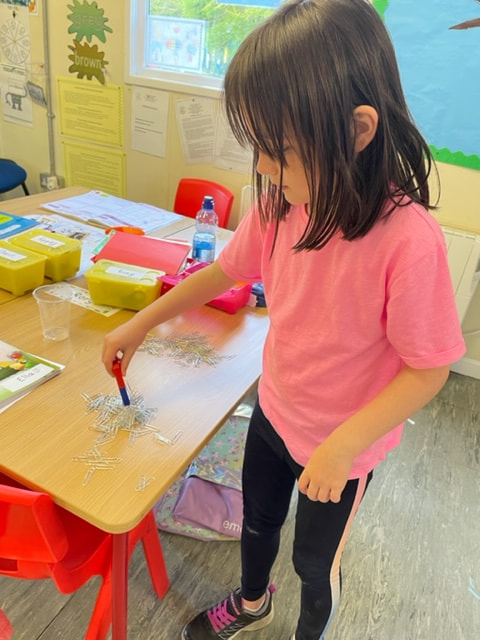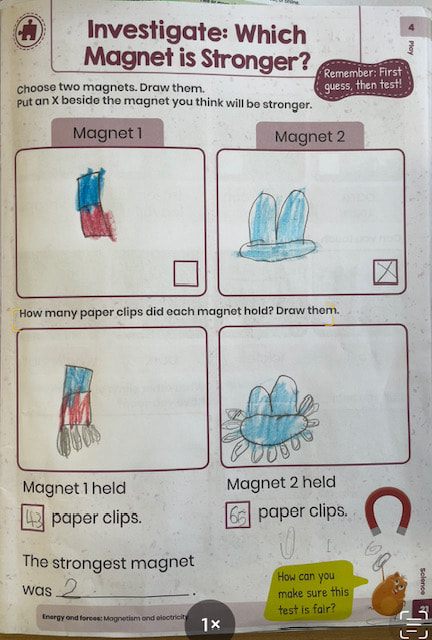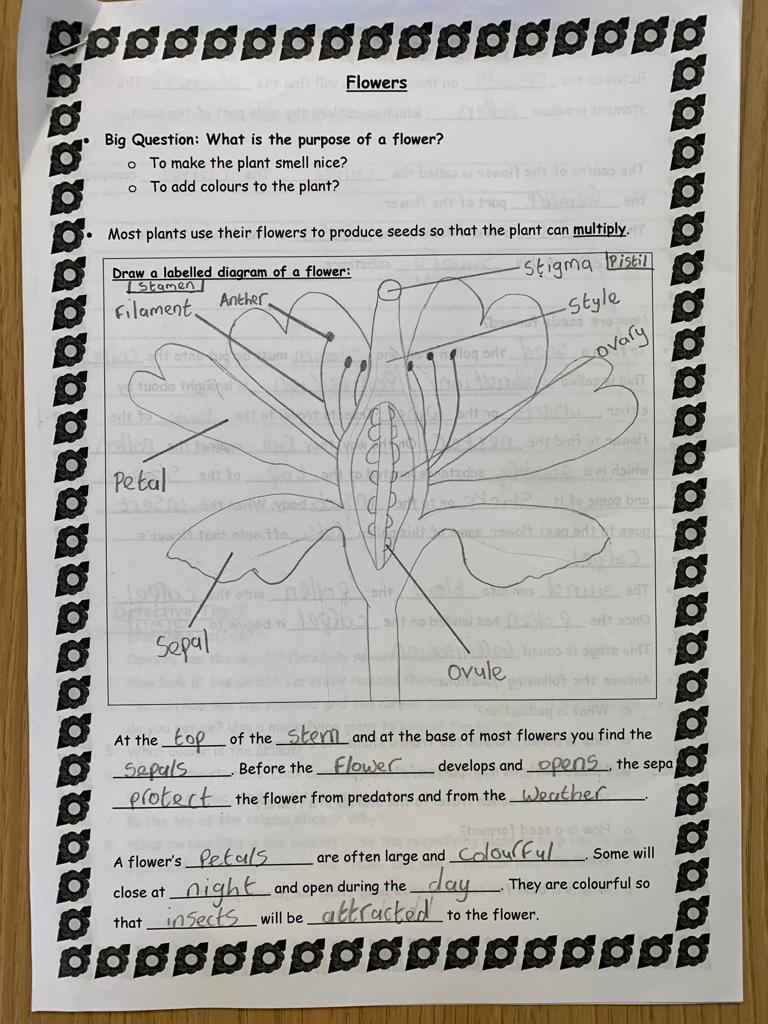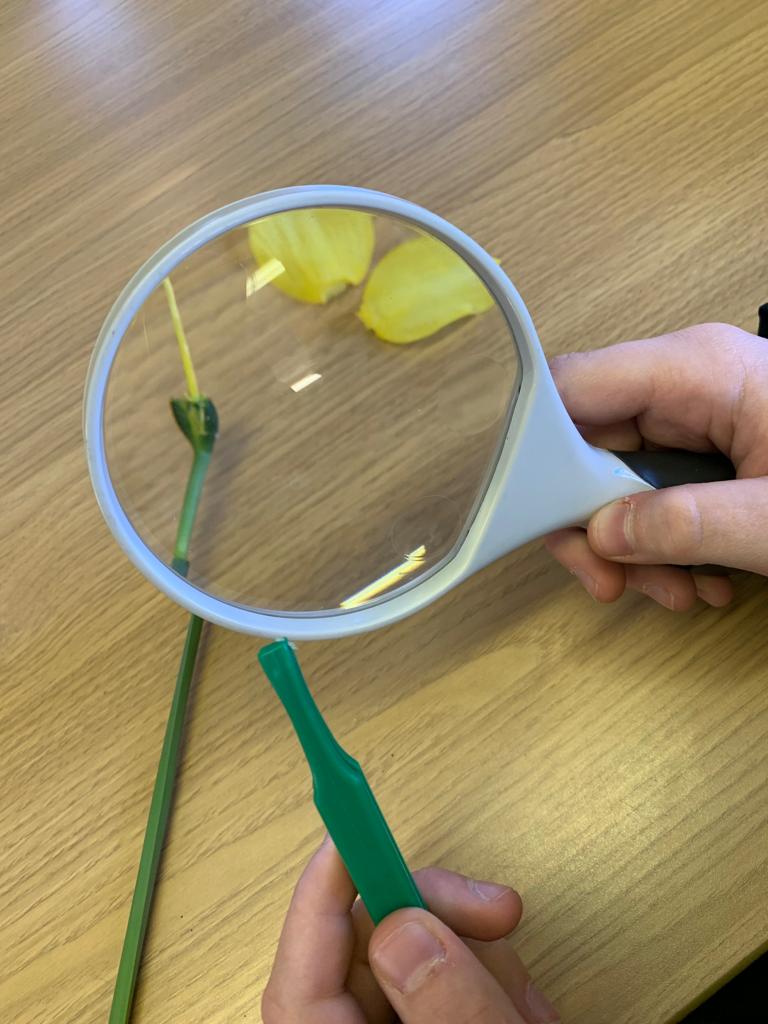Step 1: Science
Show how pupils have used STEM skills in projects on environment or sustainability
This year St. Peter's National School are aiming to earn a Green Flag for Litter and Waste. We have been very busy coming up with ways of reducing the amount of waste in our school. We took a tally of the types of waste we use through a typical school day and then came up with ways of trying to reduce this waste e.g using lunch boxes instead of wrapping for sandwiches, putting pencil shavings in the compost bin, using front and back of pages and suing reusable drinks containers. From our graph results we were successful in reducing the waste on our school.
Our next aim was to help reduce the waste in our local community so we organised a litter day around Dunboyne Village. We had waste bags and recycling bags and hi-vis vests. We got into different groups and assigned different parts of the village to each group. Within the group we had litter spotters and it was their responsibility to inform the teacher of any rubbish they had spotted. We also had children take a tally of all the rubbish we collected. Back at the classroom we used the tally to record our information and discussed the results. We also sorted through the rubbish and assigned it to the compost, recyling and waste bins.
Our next aim was to help reduce the waste in our local community so we organised a litter day around Dunboyne Village. We had waste bags and recycling bags and hi-vis vests. We got into different groups and assigned different parts of the village to each group. Within the group we had litter spotters and it was their responsibility to inform the teacher of any rubbish they had spotted. We also had children take a tally of all the rubbish we collected. Back at the classroom we used the tally to record our information and discussed the results. We also sorted through the rubbish and assigned it to the compost, recyling and waste bins.
Step 1: Science
Take part in Science Week www.scienceweek.ie
Pupils from 5th and 6th took part in science week
Sensational Space: We learned lots of facts about the solar system. We examined the different planets, what they’re made up of and their distance from the Sun. We learned lots of interesting facts about the planets. Our favourite fact was that on Uranus it can even rain diamonds!
Nuts about Nature: We learned that water is one of the most important features of our planet. We learned about food chains/webs and how if one animal is affected, it can affect them all. We really enjoyed trying to find the animals that were camouflaged in photos. Some animals have really cool adaptions.
Maths Bubble Talk and Demonstration: This zoom was hosted by a Mathematician/Scientist in Maynooth University. One of the areas he specialises in is Shapes, and in particular shapes within shapes. He has experimented with shapes and forms using structures and bubbles. He used 50 litres of water and 10 litres of washing up liquid. He had made a variety of different 3D shapes using straws. He then dipped them in the huge tub of liquid and we saw the different shapes that formed within the shapes. It was amazing! We wanted to do it in school but we didn’t think it would be a good idea to use that much water and washing up liquid! He also taught us why bubbles create their spherical shape. It would take a computer weeks to work this out but it occurs so naturally and quickly in nature.
Sensational Space: We learned lots of facts about the solar system. We examined the different planets, what they’re made up of and their distance from the Sun. We learned lots of interesting facts about the planets. Our favourite fact was that on Uranus it can even rain diamonds!
Nuts about Nature: We learned that water is one of the most important features of our planet. We learned about food chains/webs and how if one animal is affected, it can affect them all. We really enjoyed trying to find the animals that were camouflaged in photos. Some animals have really cool adaptions.
Maths Bubble Talk and Demonstration: This zoom was hosted by a Mathematician/Scientist in Maynooth University. One of the areas he specialises in is Shapes, and in particular shapes within shapes. He has experimented with shapes and forms using structures and bubbles. He used 50 litres of water and 10 litres of washing up liquid. He had made a variety of different 3D shapes using straws. He then dipped them in the huge tub of liquid and we saw the different shapes that formed within the shapes. It was amazing! We wanted to do it in school but we didn’t think it would be a good idea to use that much water and washing up liquid! He also taught us why bubbles create their spherical shape. It would take a computer weeks to work this out but it occurs so naturally and quickly in nature.
One hands-on investigation - Materials
Pupils from Junior, Senior and First did an experiment on Materials
Our theme for November was all about materials. We read the story of the Three Little Pigs and explored the materials used to build each house. We then went a little further and explored how materials can change using a heating and cooling experiment. We heated 5 different items and made predictions as to what would happen. We carried out the experiment and then recorded our results
Our theme for November was all about materials. We read the story of the Three Little Pigs and explored the materials used to build each house. We then went a little further and explored how materials can change using a heating and cooling experiment. We heated 5 different items and made predictions as to what would happen. We carried out the experiment and then recorded our results
One hands-on investigation - Environmental awareness and care
On Monday we got a visit from the Heritage group in Meath. He took us on a walk around local surroundings in and around the greens of Dunboyne Castle. We looked at the different trees and discussed what they looked like and investigated the different leaves belonging to each tree. We talked about ways that we can look after the trees in our environment and about how important trees are for the animals as they provide food, shelter and a place to live. We used magnifying glasses to spot flowers in the gardens and we did a scavenger hunt around the grounds.
One hands-on investigation - Energy and Forces
First class were doing the topic of Magnets in Science. We tested different magnets to see which were magnetic and non-magnetic. We explored magnets and how they work through our 5 work stations 1. Find the magnet in the sand 2. Find the paper clip in the envelopes 3. Going fishing 4. Magnet mazes and 5. Literacy using magnetic letters. We also carried out an experiment to see which magnet was the strongest by guessing how many paper clips they could hold. We recorded all our results.
One hands-on investigation - Living Things
5th and 6th were doing the topic of Plants and Animals in SESE for the month of April. The pupils discussed different flowers we see in Spring. We studied the parts of a flower using diagrams. We used our school garden to gather some daffodils and in pairs we dissected the daffodils using tweezers. We used magnifying glasses to further observe the different parts of the Daffodil.
|
Phone: 01 8026741
Follow: On Facebook
|

